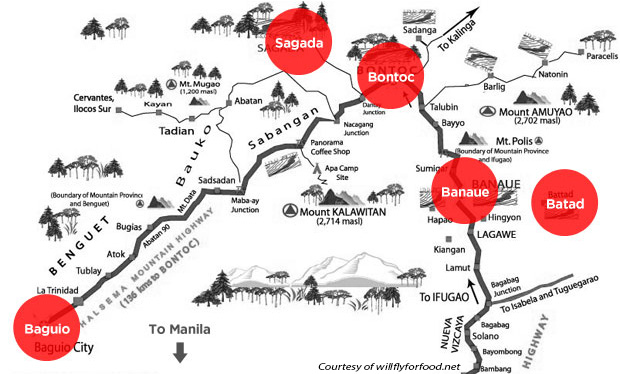




This province is almost always mistakenly called a “mountain,” a tidbit locals find funny. Won’t it be amusing if someone says “Atlantic” instead of “Atlantic City?” So just make sure you say both names—no shortcuts.
There are no flights directly to this area; but the drive, whether from Manila, Baguio or Banaue, is well worth it. Yes, the roads may be rough at times, but the awesome view of vegetable gardens, unspoiled forests and rip-rapped rice terraces won’t disappoint even the most seasoned adventurer.
Stop at the Bontoc Village Museum in Bontoc and take in the artifacts collected from around the region. Run by Catholic nuns, it’s an old museum housed in a large Ifugao hut. The museum highlights ethnographic items of the 20th century.
For a deeper understanding of the history of the area, go to the 3,000-plus-year-old Alab Petroglyphs, a set of carvings on boulders that depict the people’s ancient way of life.
Then head to the backpackers’ haven of Sagada. Rooms are mid-range to downright cheap, and there is tons you can do without having to spend too much. There are plenty of caves and hot springs to explore, like the Sumaguing Cave with stalagmite and stalactite formations. And there are even hanging coffins around here. Surrounding Echo Valley are wooden coffins within limestone formations.
You can also witness the back-breaking art of backstrap-weaving. For hand-woven cloth textile, go to Samoki and learn how to create their incredible fabric. Sabangan and Sagada also have their own textile weaving workshops, primarily run by women. The men, on the other hand, are in charge of carving and weaving baskets and other household items.
Because of visits from travelers from all corners of the globe, there is a wide range of food choices here, especially in Sagada. Taste exquisite carrot and banana bread, highland Arabic coffee and the famous Sagada oranges.